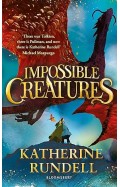The Great Mysore Bhagavata
By: B.N. Goswamy
-
Rs 6,226.50
- Rs 8,895.00
- 30%
You save Rs 2,668.50.
Due to constant currency fluctuation, prices are subject to change with or without notice.
A ‘southern’ manuscript? With the exception of the work done in the sultanates of the Deccan, relatively little attention, certainly compared to the attention that schools of painting in the North have received, has gone to painting in the southern parts of India. Even rarer has been the fact of a complete, surviving manuscript from the South being taken in hand and studied in such detail. This book from Mysore, therefore, stands out and shines, not only because of the splendour of its illustrations but also because it engages with an enduring theme—that great and sacred text, The Bhagavata purāna—in a manner, and from an angle, that is completely different from almost anything else that one sees. There are leaps of imagination here that take one’s breath away, and the episodes picked up by its great but unnamed illustrators are explored in dense, brilliant detail. At each step the painters seem to have been aware of the importance of the text itself. For the purāna they were engaging with has a very special place in the heart of devotees, there being the belief that the Bhagavata ‘is equal in status to the Veda’. ‘those who have drunk with their ears even a single syllable of the story of the Bhagavata are freed from the cycle of birth and death’, it has been said. The narrative in their hands, therefore, remains not simply an absorbing narrative, but can be seen immersed in bhakti—devotion—that is the leitmotif of this purāna. The scope of the volume is restricted to the second half of the tenth book of the purāna—in which the winsome childhood and the seductive growing years of Krishna get left out—but as a devotee one is led into a different world. Here the city of dwarfs is founded; a fierce contest with the bear-king jambavana is fought; the khandava forest is burnt down; the great fortress of narakasura is attacked and vanquished; the city of Hastinapura is dragged to the waters; great pilgrimages are undertaken; hordes of enslaved princes are freed; Shishupala is slain; Jarasandha is riven. Wide-eyed, one sees wonders piling upon majestic wonders.
A ‘southern’ manuscript? With the exception of the work done in the sultanates of the Deccan, relatively little attention, certainly compared to the attention that schools of painting in the North have received, has gone to painting in the southern parts of India. Even rarer has been the fact of a complete, surviving manuscript from the South being taken in hand and studied in such detail. This book from Mysore, therefore, stands out and shines, not only because of the splendour of its illustrations but also because it engages with an enduring theme—that great and sacred text, The Bhagavata purāna—in a manner, and from an angle, that is completely different from almost anything else that one sees. There are leaps of imagination here that take one’s breath away, and the episodes picked up by its great but unnamed illustrators are explored in dense, brilliant detail. At each step the painters seem to have been aware of the importance of the text itself. For the purāna they were engaging with has a very special place in the heart of devotees, there being the belief that the Bhagavata ‘is equal in status to the Veda’. ‘those who have drunk with their ears even a single syllable of the story of the Bhagavata are freed from the cycle of birth and death’, it has been said. The narrative in their hands, therefore, remains not simply an absorbing narrative, but can be seen immersed in bhakti—devotion—that is the leitmotif of this purāna. The scope of the volume is restricted to the second half of the tenth book of the purāna—in which the winsome childhood and the seductive growing years of Krishna get left out—but as a devotee one is led into a different world. Here the city of dwarfs is founded; a fierce contest with the bear-king jambavana is fought; the khandava forest is burnt down; the great fortress of narakasura is attacked and vanquished; the city of Hastinapura is dragged to the waters; great pilgrimages are undertaken; hordes of enslaved princes are freed; Shishupala is slain; Jarasandha is riven. Wide-eyed, one sees wonders piling upon majestic wonders.
Zubin Mehta: A Musical Journey (An Authorized Biography)
By: VOID - Bakhtiar K. Dadabhoy
Rs 630.00 Rs 1,050.00 Ex Tax :Rs 630.00
A Splendid Land - Paintings from Royal Udaipur
By: Debra Diamond
Rs 13,596.00 Rs 16,995.00 Ex Tax :Rs 13,596.00
Culture City How Culture Leaves Its Mark on Cities and Architecture Around the World
By: Wilfried Wang
Rs 4,455.00 Rs 4,950.00 Ex Tax :Rs 4,455.00
The Story of Gothic Architecture (Story Of... (Prestel))
By: Francesca Prina
Rs 1,377.00 Rs 2,295.00 Ex Tax :Rs 1,377.00
A Splendid Land - Paintings from Royal Udaipur
By: Debra Diamond
Rs 13,596.00 Rs 16,995.00 Ex Tax :Rs 13,596.00
No recently viewed books available at the moment.
Zubin Mehta: A Musical Journey (An Authorized Biography)
By: VOID - Bakhtiar K. Dadabhoy
Rs 630.00 Rs 1,050.00 Ex Tax :Rs 630.00
A Splendid Land - Paintings from Royal Udaipur
By: Debra Diamond
Rs 13,596.00 Rs 16,995.00 Ex Tax :Rs 13,596.00














-120x187.jpg?q6)

















